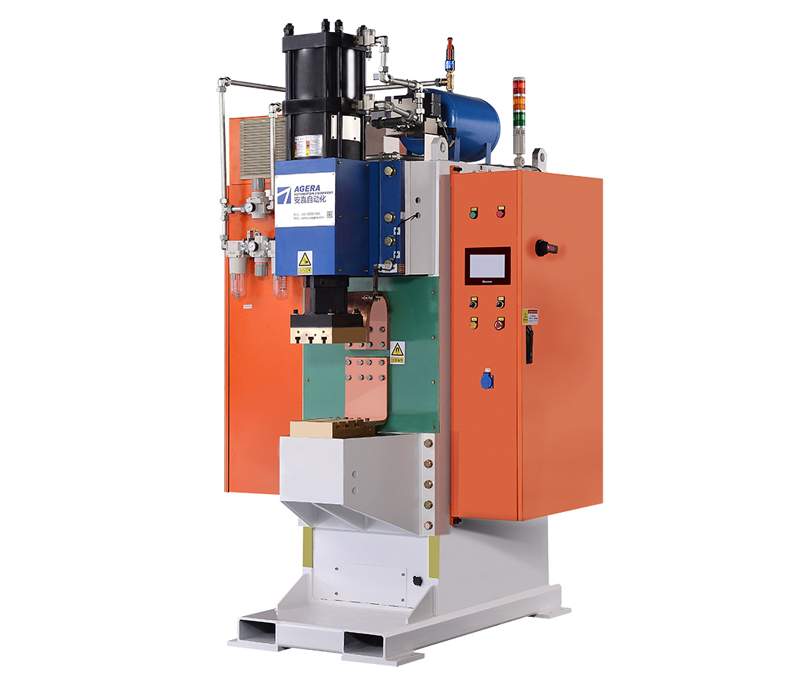The thermal process of an energy storage spot welding machine plays a crucial role in achieving successful welds. This article provides an overview of the thermal process involved in energy storage spot welding, explaining the key stages and factors that contribute to the heat generation, transfer, and control during the welding operation.
- Heat Generation: The heat generation in an energy storage spot welding machine is primarily accomplished through the discharge of stored electrical energy. The energy stored in the capacitors is rapidly released in the form of an electric current, which flows through the workpiece materials. This current encounters resistance, leading to joule heating, where the electrical energy is converted into heat energy at the weld interface.
- Heat Transfer: Once the heat is generated at the weld interface, it undergoes a process of heat transfer. This involves the movement of heat energy from the weld zone to the surrounding materials and the environment. Heat transfer occurs through various mechanisms, including conduction, convection, and radiation. The rate of heat transfer depends on factors such as material properties, joint configuration, and surrounding conditions.
- Melting and Solidification: During the welding process, the localized heat causes the workpiece materials to reach their melting point. The high temperature at the weld interface results in the melting and subsequent fusion of the materials. As the heat dissipates, the molten materials solidify, forming a strong metallurgical bond. The control of heat input and cooling rate is critical to ensure proper fusion and avoid defects like undercuts or excessive heat-affected zones.
- Thermal Control: Achieving optimal weld quality requires precise thermal control during the welding process. Energy storage spot welding machines offer various means of controlling the thermal parameters. Operators can adjust the welding current, pulse duration, and other parameters to regulate the heat input and control the temperature distribution within the workpiece. This control ensures consistent and repeatable welds, minimizing the risk of overheating or insufficient fusion.
- Heat-Affected Zone: Adjacent to the weld zone, a region known as the heat-affected zone (HAZ) experiences thermal changes during welding. The HAZ undergoes varying degrees of heating, which can result in microstructural transformations, such as grain growth or phase changes. The size and extent of the HAZ depend on the welding parameters, material properties, and joint configuration. Proper control of the thermal process helps minimize the width and potential detrimental effects of the HAZ.
The thermal process of an energy storage spot welding machine is a critical aspect of achieving successful and high-quality welds. Through the controlled generation, transfer, and management of heat, operators can create reliable and durable welds with minimal distortion and defects. Understanding the thermal process and implementing proper control techniques allow for optimized welding conditions, ensuring consistent weld quality and meeting the requirements of various industrial applications.
Post time: Jun-07-2023



